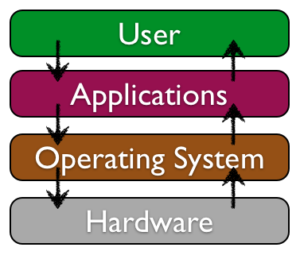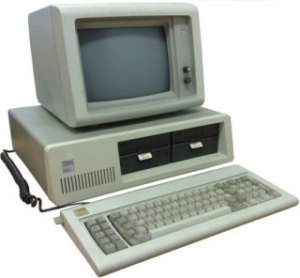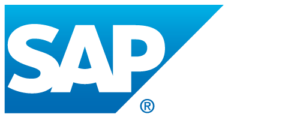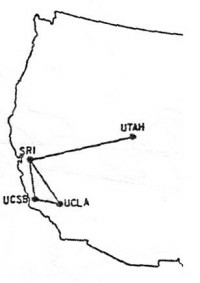
Upon successful completion of this chapter, you will be able to:
Welcome to the world of information systems, a world that seems to change almost daily. Over the past few decades information systems have progressed to being virtually everywhere, even to the point where you may not realize its existence in many of your daily activities. Stop and consider how you interface with various components in information systems every day through different electronic devices. Smartphones, laptop, and personal computers connect us constantly to a variety of systems including messaging, banking, online retailing, and academic resources, just to name a few examples. Information systems are at the center of virtually every organization, providing users with almost unlimited resources.
Have you ever considered why businesses invest in technology? Some purchase computer hardware and software because everyone else has computers. Some even invest in the same hardware and software as their business friends even though different technology might be more appropriate for them. Finally, some businesses do sufficient research before deciding what best fits their needs. As you read through this book be sure to evaluate the contents of each chapter based on how you might someday apply what you have learned to strengthen the position of the business you work for, or maybe even your own business. Wise decisions can result in stability and growth for your future enterprise.
Information systems surround you almost every day. Wi-fi networks on your university campus, database search services in the learning resource center, and printers in computer labs are good examples. Every time you go shopping you are interacting with an information system that manages inventory and sales. Even driving to school or work results in an interaction with the transportation information system, impacting traffic lights, cameras, etc. Vending machines connect and communicate using the Internet of Things (IoT). Your car’s computer system does more than just control the engine – acceleration, shifting, and braking data is always recorded. And, of course, everyone’s smartphone is constantly connecting to available networks via Wi-fi, recording your location and other data.
Can you think of some words to describe an information system? Words such as “computers,” “networks,” or “databases” might pop into your mind. The study of information systems encompasses a broad array of devices, software, and data systems. Defining an information system provides you with a solid start to this course and the content you are about to encounter.
Many programs in business require students to take a course in information systems. Various authors have attempted to define the term in different ways. Read the following definitions, then see if you can detect some variances.
As you can see these definitions focus on two different ways of describing information systems: the components that make up an information system and the role those components play in an organization. Each of these need to be examined.
Information systems can be viewed as having five major components: hardware, software, data, people, and processes. The first three are technology. These are probably what you thought of when defining information systems. The last two components, people and processes, separate the idea of information systems from more technical fields, such as computer science. In order to fully understand information systems, you will need to understand how all of these components work together to bring value to an organization.
Technology can be thought of as the application of scientific knowledge for practical purposes. From the invention of the wheel to the harnessing of electricity for artificial lighting, technology has become ubiquitous in daily life, to the degree that it is assumed to always be available for use regardless of location. As discussed before, the first three components of information systems – hardware, software, and data – all fall under the category of technology. Each of these will be addressed in an individual chapter. At this point a simple introduction should help you in your understanding.
Hardware is the tangible, physical portion of an information system – the part you can touch. Computers, keyboards, disk drives, and flash drives are all examples of information systems hardware. How these hardware components function and work together will be covered in Chapter 2.

Software comprises the set of instructions that tell the hardware what to do. Software is not tangible – it cannot be touched. Programmers create software by typing a series of instructions telling the hardware what to do. Two main categories of software are: Operating Systems and Application software. Operating Systems software provides the interface between the hardware and the Application software. Examples of operating systems for a personal computer include Microsoft Windows and Ubuntu Linux. The mobile phone operating system market is dominated by Google Android and Apple iOS. Application software allows the user to perform tasks such as creating documents, recording data in a spreadsheet, or messaging a friend. Software will be explored more thoroughly in Chapter 3.
The third technology component is data. You can think of data as a collection of facts. For example, your address (street, city state, postal code), your phone number, and your social networking account are all pieces of data. Like software, data is also intangible, unable to be seen in its native state. Pieces of unrelated data are not very useful. But aggregated, indexed, and organized together into a database, data can become a powerful tool for businesses. Organizations collect all kinds of data and use it to make decisions which can then be analyzed as to their effectiveness. The analysis of data is then used to improve the organization’s performance. Chapter 4 will focus on data and databases, and how it is used in organizations.
Besides the technology components (hardware, software, and data) which have long been considered the core technology of information systems, it has been suggested that one other component should be added: communication. An information system can exist without the ability to communicate – the first personal computers were stand-alone machines that did not access the Internet. However, in today’s hyper-connected world, it is an extremely rare computer that does not connect to another device or to a enetwork. Technically, the networking communication component is made up of hardware and software, but it is such a core feature of today’s information systems that it has become its own category. Networking will be covered in Chapter 5.

When thinking about information systems, it is easy to focus on the technology components and forget to look beyond these tools to fully understand their integration into an organization. A focus on the people involved in information systems is the next step. From the front-line user support staff, to systems analysts, to developers, all the way up to the chief information officer (CIO), the people involved with information systems are an essential element. The people component will be covered in Chapter 9.
The last component of information systems is process. A process is a series of steps undertaken to achieve a desired outcome or goal. Information systems are becoming more integrated with organizational processes, bringing greater productivity and better control to those processes. But simply automating activities using technology is not enough – businesses looking to utilize information systems must do more. The ultimate goal is to improve processes both internally and externally, enhancing interfaces with suppliers and customers. Technology buzzwords such as “business process re-engineering,” “business process management,” and “enterprise resource planning” all have to do with the continued improvement of these business procedures and the integration of technology with them. Businesses hoping to gain a competitive advantage over their competitors are highly focused on this component of information systems. The process element in information systems will be discussed in Chapter 8.
You should now understand that information systems have a number of vital components, some tangible, others intangible, and still others of a personnel nature. These components collect, store, organize, and distribute data throughout the organization. You may have even realized that one of the roles of information systems is to take data and turn it into information, and then transform that information into organizational knowledge. As technology has developed, this role has evolved into the backbone of the organization, making information systems integral to virtually every business. The integration of information systems into organizations has progressed over the decades.
From the late 1950s through the 1960s, computers were seen as a way to more efficiently do calculations. These first business computers were room-sized monsters, with several machines linked together. The primary work was to organize and store large volumes of information that were tedious to manage by hand. Only large businesses, universities, and government agencies could afford them, and they took a crew of specialized personnel and dedicated facilities to provide information to organizations.
Time-sharing allowed dozens or even hundreds of users to simultaneously access mainframe computers from locations in the same building or miles away. Typical functions included scientific calculations and accounting, all under the broader umbrella of “data processing.”
In the late 1960s, Manufacturing Resources Planning (MRP) systems were introduced. This software, running on a mainframe computer, gave companies the ability to manage the manufacturing process, making it more efficient. From tracking inventory to creating bills of materials to scheduling production, the MRP systems gave more businesses a reason to integrate computing into their processes. IBM became the dominant mainframe company. Continued improvement in software and the availability of cheaper hardware eventually brought mainframe computers (and their little sibling, the minicomputer) into most large businesses.
Today you probably think of Silicon Valley in northern California as the center of computing and technology. But in the days of the mainframe’s dominance corporations in the cities of Minneapolis and St. Paul produced most computers. The advent of the personal computer resulted in the “center of technology” eventually moving to Silicon Valley.
In 1975, the first microcomputer was announced on the cover of Popular Mechanics: the Altair 8800. Its immediate popularity sparked the imagination of entrepreneurs everywhere, and there were soon dozens of companies manufacturing these “personal computers.” Though at first just a niche product for computer hobbyists, improvements in usability and the availability of practical software led to growing sales. The most prominent of these early personal computer makers was a little company known as Apple Computer, headed by Steve Jobs and Steve Wozniak, with the hugely successful “Apple II.” Not wanting to be left out of the revolution, in 1981 IBM teamed with Microsoft, then just a startup company, for their operating system software and hurriedly released their own version of the personal computer simply called the “PC.” Small businesses finally had affordable computing that could provide them with needed information systems. Popularity of the IBM PC gave legitimacy to the microcomputer and it was named Time magazine’s “Man of the Year” for 1982.

Because of the IBM PC’s open architecture, it was easy for other companies to copy, or “clone” it. During the 1980s, many new computer companies sprang up, offering less expensive versions of the PC. This drove prices down and spurred innovation. Microsoft developed the Windows operating system, with version 3.1 in 1992 becoming the first commercially successful release. Typical uses for the PC during this period included word processing, spreadsheets, and databases. These early PCs were standalone machines, not connected to a network.
In the mid-1980s, businesses began to see the need to connect their computers as a way to collaborate and share resources. Known as “client-server,” this networking architecture allowed users to log in to the Local Area Network (LAN) from their PC (the “client”) by connecting to a central computer called a “server.” The server would lookup permissions for each user to determine who had access to various resources such as printers and files. Software companies began developing applications that allowed multiple users to access the same data at the same time. This evolved into software applications for communicating, with the first popular use of electronic mail appearing at this time.

This networking and data sharing all stayed mainly within the confines of each business. Sharing of electronic data between companies was a very specialized function. Computers were now seen as tools to collaborate internally within an organization. These networks of computers were becoming so powerful that they were replacing many of the functions previously performed by the larger mainframe computers at a fraction of the cost. It was during this era that the first Enterprise Resource Planning (ERP) systems were developed and run on the client-server architecture. An ERP system is an application with a centralized database that can be used to run a company’s entire business. With separate modules for accounting, finance, inventory, human resources, and many more, ERP systems, with Germany’s SAP leading the way, represented the state of the art in information systems integration. ERP systems will be discussed in Chapter 9.

The first long distance transmission between two computers occurred on October 29, 1969 when developers under the direction of Dr. Leonard Kleinrock sent the word “login” from the campus of UCLA to Stanford Research Institute in Menlo Park, California, a distance of over 350 miles. The United States Department of Defense created and funded ARPA Net (Advanced Research Projects Administration), an experimental network which eventually became known as the Internet. ARPA Net began with just four nodes or sites, a very humble start for today’s Internet. Initially, the Internet was confined to use by universities, government agencies, and researchers. Users were required to type commands (today we refer to this as “command line”) in order to communicate and transfer files. The first e-mail messages on the Internet were sent in the early 1970s as a few very large companies expanded from local networks to the Internet. The computer was now evolving from a purely computational device into the world of digital communications.
In 1989, Tim Berners-Lee developed a simpler way for researchers to share information over the Internet, a concept he called the World Wide Web. [4] This invention became the catalyst for the growth of the Internet as a way for businesses to share information about themselves. As web browsers and Internet connections became the norm, companies rushed to grab domain names and create websites.
In 1991 the National Science Foundation, which governed how the Internet was used, lifted restrictions on its commercial use. Corporations soon realized the huge potential of a digital marketplace on the Internet and in 1994 both eBay and Amazon were founded. A mad rush of investment in Internet-based businesses led to the dot-com boom through the late 1990s, and then the dot-com bust in 2000. The bust occurred as investors, tired of seeing hundreds of companies reporting losses, abandoned their investments. An important outcome for businesses was that thousands of miles of Internet connections, in the form of fiber optic cable, were laid around the world during that time. The world became truly “wired” heading into the new millenium, ushering in the era of globalization, which will be discussed in Chapter 11. This TED Talk video focuses on connecting Africa to the Internet through undersea fibre optic cable.
The digital world also became a more dangerous place as virtually all companies connected to the Internet. Computer viruses and worms, once slowly propagated through the sharing of computer disks, could now grow with tremendous speed via the Internet. Software and operating systems written for a standalone world found it very difficult to defend against these sorts of threats. A whole new industry of computer and Internet security arose. Information security will be discussed in Chapter 6.
As the world recovered from the dot-com bust, the use of technology in business continued to evolve at a frantic pace. Websites became interactive. Instead of just visiting a site to find out about a business and then purchase its products, customers wanted to be able to customize their experience and interact online with the business. This new type of interactive website, where you did not have to know how to create a web page or do any programming in order to put information online, became known as Web 2.0. This new stage of the Web was exemplified by blogging, social networking, and interactive comments being available on many websites. The new Web 2.0 world, in which online interaction became expected, had a major impact on many businesses and even whole industries. Many bookstores found themselves relegated to a niche status. Video rental chains and travel agencies simply began going out of business as they were replaced by online technologies. The newspaper industry saw a huge drop in circulation with some cities such as New Orleans no longer able to support a daily newspaper.
Disintermediation is the process of technology replacing a middleman in a transaction. Web 2.0 allowed users to get information and news online, reducing dependence of physical books and newspapers.
As the world became more connected, new questions arose. Should access to the Internet be considered a right? Is it legal to copy a song that had been downloaded from the Internet? Can information entered into a website be kept private? What information is acceptable to collect from children? Technology moved so fast that policymakers did not have enough time to enact appropriate laws. Ethical issues surrounding information systems will be covered in Chapter 12.
Ray Ozzie, a technology visionary at Microsoft, stated in 2012 that computing was moving into a phase he called the post-PC world. [5] Now six years later that prediction has not stood up very well to reality. As you will read in Chapter 13, PC sales have dropped slightly in recent years while there has been a precipitous decline in tablet sales. Smartphone sales have accelerated, due largely to their mobility and ease of operation. Just as the mainframe before it, the PC will continue to play a key role in business, but its role will be somewhat diminished as people emphasize mobility as a central feature of technology. Cloud computing provides users with mobile access to data and applications, making the PC more of a part of the communications channel rather than a repository of programs and information. Innovation in the development of technology and communications will continue to move businesses forward.
| Era | Hardware | Operating System | Applications |
| Mainframe (1970s) | Terminals connected to mainframe computer | Time-sharing (TSO) on Multiple Virtual Storage (MVS) | Custom-written MRP software |
| PC (mid-1980s) | IBM PC or compatible. Sometimes connected to mainframe computer via network interface card. | MS-DOS | WordPerfect, Lotus 1-2-3 |
| Client-Server (late 80s to early 90s) | IBM PC “clone” on a Novell Network. | Windows for Workgroups | Microsoft Word, Microsoft Excel |
| World Wide Web (mid-90s to early 2000s) | IBM PC “clone” connected to company intranet. | Windows XP | Microsoft Office, Internet Explorer |
| Web 2.0 (mid-2000s – present) | Laptop connected to company Wi-Fi. | Windows 10 | Microsoft Office |
| Post-PC (today and beyond) | Smartphones | Android, iOS | Mobile-friendly websites, mobile apps |
It has always been the assumption that the implementation of information systems will bring a business competitive advantage. If installing one computer to manage inventory can make a company more efficient, then it can be expected that installing several computers can improve business processes and efficiency.
In 2003, Nicholas Carr wrote an article in the Harvard Business Review that questioned this assumption. Entitled “I.T. Doesn’t Matter.” Carr was concerned that information technology had become just a commodity. Instead of viewing technology as an investment that will make a company stand out, Carr said technology would become as common as electricity – something to be managed to reduce costs, ensure that it is always running, and be as risk-free as possible.
The article was both hailed and scorned. Can I.T. bring a competitive advantage to an organization? It sure did for Walmart (see sidebar). Technology and competitive advantage will be discussed in Chapter 7.

Walmart is the world’s largest retailer, earn 8.1 billion for the fiscal year that ended on January 31, 2018. Walmart currently serves over 260 million customers every week worldwide through its 11,700 stores in 28 countries. [6] In 2018 Fortune magazine for the sixth straight year ranked Walmart the number one company for annual revenue as they again exceeded $500 billion in annual sales. The next closest company, Exxon, had less than half of Walmart’s total revenue. [7] Walmart’s rise to prominence is due in large part to making information systems a high priority, especially in their Supply Chain Management (SCM) system known as Retail Link. ing $14.3 billion on sales of $30
This system, unique when initially implemented in the mid-1980s, allowed Walmart’s suppliers to directly access the inventory levels and sales information of their products at any of Walmart’s more than eleven thousand stores. Using Retail Link, suppliers can analyze how well their products are selling at one or more Walmart stores with a range of reporting options. Further, Walmart requires the suppliers to use Retail Link to manage their own inventory levels. If a supplier feels that their products are selling out too quickly, they can use Retail Link to petition Walmart to raise the inventory levels for their products. This has essentially allowed Walmart to “hire” thousands of product managers, all of whom have a vested interest in the products they are managing. This revolutionary approach to managing inventory has allowed Walmart to continue to drive prices down and respond to market forces quickly.
Today Walmart continues to innovate with information technology. Using its tremendous market presence, any technology that Walmart requires its suppliers to implement immediately becomes a business standard. For example, in 1983 Walmart became the first large retailer to require suppliers to the use Uniform Product Code (UPC) labels on all products. Clearly, Walmart has learned how to use I.T. to gain a competitive advantage.
In this chapter you have been introduced to the concept of information systems. Several definitions focused on the main components: technology, people, and process. You saw how the business use of information systems has evolved over the years, from the use of large mainframe computers for number crunching, through the introduction of the PC and networks, all the way to the era of mobile computing. During each of these phases, new innovations in software and technology allowed businesses to integrate technology more deeply into their organizations.
Virtually every company uses information systems which leads to the question: Does information systems bring a competitive advantage? In the final analysis the goal of this book is to help you understand the importance of information systems in making an organization more competitive. Your challenge is to understand the key components of an information system and how it can be used to bring a competitive advantage to every organization you will serve in your career.